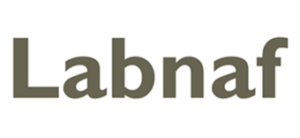A data architect designs and maintains an organization’s data architecture to ensure that data is organized, accessible, and secure, and supports its mission and goals.
The Labnaf framework is data centric, very structured, organized into levels of detail.
Your data is organized following functional domains also known as business capability level 1.
It makes data architecture easy because the concepts are simple and natural.
90% of your data architecture modeling is automatically generated by Labnaf. It will automatically discover who and what is using your data throughout all architecture layers. This is called implicit data generation.
You can easily classify your data following several sensitivity categories like privacy confidentiality integrity availability and non-repudiation. Labnaf will then automatically classify every item in your architecture following its usage of sensitive data. You can then generate reports dashboards charts about the usage of sensitive data across all architectural layers. This is very important for GDPR compliance and security audits.
Using Labnaf you can easily describe how people, software and equipment exchange data, material, people, and software. For example, a software can exchange pricing data with another software or with people. Organizations can exchange consultants. Equipment can exchange raw material with order equipment or with people. Factories can exchange electricity.
Labnaf simplifies master data management. You can very easily define who and what owns or uses which data. The detection of data usage is largely automated.
